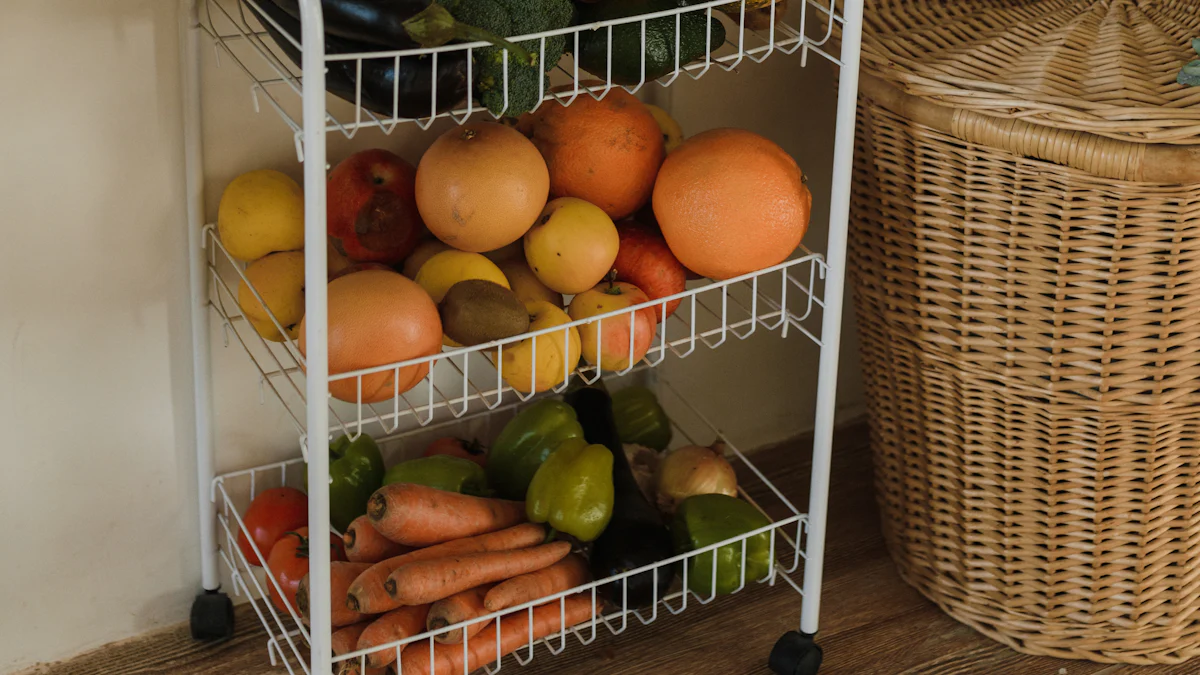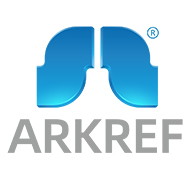How to Tackle Storage Problems Using Multi-Purpose Cold Storage

Efficient storage plays a critical role in maintaining the quality and safety of goods, especially when dealing with temperature-sensitive items. Multi-purpose cold storage offers a cutting-edge solution to tackle these challenges. It ensures precise temperature control, allowing you to store diverse products like perishable food, pharmaceuticals, and other sensitive goods under optimal conditions. By integrating advanced cold storage logistics, businesses can reduce waste, extend shelf life, and enhance food security. Additionally, these facilities optimize space and energy use, making them a cost-effective choice for industries requiring reliable storage solutions.
Key Takeaways
Multi-purpose cold storage allows for precise temperature control, ensuring that diverse products like food and pharmaceuticals are stored under optimal conditions.
Flexible layouts in multi-purpose cold storage maximize space utilization, reducing overcrowding and improving inventory management efficiency.
Investing in energy-efficient cold storage solutions can significantly lower operational costs while minimizing environmental impact.
Automation in cold storage facilities addresses labor shortages by streamlining operations and reducing reliance on manual labor, enhancing productivity.
Advanced inventory tracking systems in multi-purpose cold storage improve traceability, helping businesses maintain compliance and reduce waste.
Scalability is a key benefit of multi-purpose cold storage, allowing businesses to adapt their storage capacity as they grow without major disruptions.
Prioritizing hygiene and safety in cold storage operations builds customer trust and ensures the quality of temperature-sensitive goods.
Key Challenges in Cold Storage

Cold storage plays a vital role in preserving perishable goods, but it comes with its own set of challenges. Understanding these challenges is the first step toward finding effective solutions. Below are some of the top industry challenges businesses face in cold chain logistics.
Temperature Control
Maintaining precise temperature levels is one of the most critical aspects of cold storage. Different products require specific temperature ranges to stay fresh and safe. For example, frozen foods need sub-zero conditions, while fresh produce thrives in slightly warmer environments. Inconsistent temperatures can lead to spoilage, product loss, and financial setbacks. Traditional cold storage facilities often struggle to provide the flexibility needed for diverse temperature requirements. Multi-purpose cold storage, however, offers advanced systems that allow you to manage multiple temperature zones within a single facility. This innovation ensures that your goods remain in optimal condition throughout the cold chain.
Space Constraints
Space optimization is another significant challenge in cold chain logistics. Many businesses deal with limited storage capacity, which can lead to overcrowding and inefficient use of available space. Overcrowded storage areas increase the risk of damage to goods and make inventory management more difficult. Traditional cold storage facilities are typically designed for bulk storage, which may not suit businesses with varied inventory needs. Multi-purpose cold storage addresses this issue by offering flexible layouts that maximize space utilization. You can store a wide range of products efficiently, reducing waste and improving overall operational efficiency.
Energy Costs
Energy consumption is a major concern in cold storage operations. Cooling systems run continuously to maintain the required temperatures, leading to high energy bills. Traditional cold storage facilities often rely on older technologies that lack energy efficiency. This not only increases costs but also has a negative environmental impact. Multi-purpose cold storage facilities are equipped with modern insulation and energy-efficient cooling systems. These features help you reduce operating costs while minimizing your carbon footprint. By adopting such solutions, you can achieve a balance between cost-effectiveness and sustainability in your cold chain operations.
Labor Shortages
Labor shortages present a significant challenge in cold storage operations. Managing temperature-sensitive goods requires skilled workers who can handle inventory efficiently while maintaining strict safety standards. However, finding and retaining such workers has become increasingly difficult due to rising labor costs and workforce limitations. This issue often leads to delays, errors, and increased operational expenses.
Multi-purpose cold storage facilities address this challenge by incorporating automation and advanced technologies. Automated systems, such as robotic palletizers and conveyor belts, streamline tasks like sorting, stacking, and retrieving goods. These systems reduce your reliance on manual labor while improving accuracy and speed. Additionally, modern cold storage units integrate smart monitoring tools that track temperature, humidity, and inventory levels in real time. This reduces the need for constant human oversight, allowing you to allocate your workforce more effectively.
By adopting multi-purpose cold storage, you can overcome labor shortages without compromising efficiency. Automation not only fills the labor gap but also enhances productivity, ensuring your operations run smoothly even with limited staff.
Inventory Management and Traceability
Managing inventory in cold storage requires precision and organization. Without proper systems in place, you risk losing track of products, leading to spoilage, waste, and financial losses. Traditional cold storage facilities often lack the tools needed for detailed inventory tracking, making it harder to maintain accurate records and ensure traceability.
Multi-purpose cold storage offers advanced inventory management solutions to solve these issues. These facilities use digital tracking systems, such as barcodes and RFID technology, to monitor your inventory in real time. You can quickly locate specific items, check their storage conditions, and track their movement throughout the supply chain. This level of visibility ensures that your products remain safe and compliant with industry regulations.
Traceability is another critical advantage of multi-purpose cold storage. With integrated software, you can generate detailed reports on your inventory’s history, including storage conditions and transit details. This is especially valuable for industries like food and pharmaceuticals, where compliance with safety standards is essential. Enhanced traceability not only protects your business from potential liabilities but also builds trust with your customers.
By leveraging the capabilities of multi-purpose cold storage, you can transform your inventory management process. These facilities provide the tools you need to maintain accuracy, reduce waste, and ensure the integrity of your products at every stage.
How Multi-Purpose Cold Storage Solves These Challenges

Advanced Temperature Control Systems
Maintaining precise temperatures is essential for preserving the quality of perishable goods. Multi-purpose cold storage facilities excel in this area by offering advanced temperature control systems. These systems allow you to manage multiple temperature zones within a single facility. For example, frozen foods can be stored at sub-zero levels, while fresh produce remains at slightly higher, consistent temperatures. This flexibility ensures that each product receives the exact conditions it needs to stay fresh and safe.
Temperature fluctuations can lead to spoilage and financial losses. Advanced systems in modern cold storage infrastructure prevent such issues by providing real-time monitoring and adjustments. Sensors track temperature changes and immediately alert you to any deviations. This proactive approach minimizes risks and ensures the integrity of your inventory. By adopting these cold logistics solutions, you can maintain product quality and reduce waste effectively.
Space Optimization with Flexible Layouts
Space constraints often challenge businesses relying on traditional cold storage infrastructure. Overcrowding can damage goods and complicate inventory management. Multi-purpose cold storage facilities address this issue with flexible layouts designed to maximize storage efficiency. Adjustable shelving and modular designs allow you to customize the space based on your inventory needs.
The growing variety of products in cold chain logistics has made efficient use of space more critical than ever. Conventional fixed rack systems struggle to accommodate diverse inventory. Multi-purpose facilities solve this problem by enabling dynamic storage configurations. You can store a wide range of items—from frozen foods to temperature-sensitive pharmaceuticals—without compromising accessibility or safety.
Efficient space utilization not only improves operations but also reduces costs. By optimizing storage, you can avoid the need for additional infrastructure investments. This adaptability makes multi-purpose cold storage a valuable solution for businesses facing fluctuating inventory demands.
Energy Efficiency Through Modern Insulation
Energy costs are a significant concern in cold storage operations. Cooling systems must run continuously to maintain required temperatures, leading to high utility bills. Multi-purpose cold storage facilities tackle this challenge with modern insulation and energy-efficient technologies. These innovations reduce energy consumption while maintaining optimal conditions for your products.
Advanced insulation materials minimize heat transfer, ensuring that cooling systems work less to maintain temperatures. This results in substantial energy savings over time. Additionally, energy-efficient compressors and smart cooling systems further enhance performance. These features not only lower operational costs but also contribute to environmental sustainability.
The rising cost of utilities has forced many cold storage businesses to pass expenses onto customers. By investing in energy-efficient cold storage infrastructure, you can mitigate these costs and remain competitive. This approach benefits both your bottom line and the environment, making it a win-win solution for your business.
Automation to Address Labor Shortages
Labor shortages in cold storage facilities create significant challenges for businesses. Managing temperature-sensitive goods requires precision and efficiency, but the demanding working conditions—such as low temperatures and repetitive tasks—make it difficult to attract and retain skilled workers. Automation offers a practical solution to this problem by streamlining operations and reducing reliance on manual labor.
Automated systems, such as robotic palletizers and conveyor belts, handle tasks like sorting, stacking, and retrieving goods with remarkable speed and accuracy. These systems eliminate the need for workers to perform physically taxing jobs, improving workplace safety and reducing turnover rates. For example, instead of relying on employees to manually move heavy loads, automated machinery can perform these tasks seamlessly, ensuring consistent performance even during peak demand periods.
Smart monitoring tools further enhance operational efficiency. These tools track temperature, humidity, and inventory levels in real time, allowing you to focus your workforce on higher-value tasks. By integrating automation into your cold storage facility, you can address labor shortages while maintaining high standards of productivity and safety.
Automation also minimizes errors in inventory handling. Human mistakes, such as misplacing items or failing to maintain proper storage conditions, can lead to spoilage and financial losses. Automated systems ensure that goods are stored and retrieved accurately, preserving their quality and reducing waste. This level of precision not only saves costs but also builds trust with your customers by consistently delivering products in optimal condition.
Incorporating automation into your operations transforms how you manage labor challenges. It allows you to maintain efficiency, reduce costs, and ensure the safety of both your workforce and your products.
Enhanced Inventory Tracking and Traceability
Efficient inventory management is critical in cold storage operations. Without proper systems, you risk losing track of products, leading to spoilage, waste, and compliance issues. Multi-purpose cold storage facilities address this challenge by offering advanced inventory tracking and traceability solutions.
Digital tools, such as barcodes and RFID technology, enable you to monitor your inventory in real time. These systems provide detailed insights into the location, condition, and movement of your goods throughout the supply chain. For instance, real-time inventory traceability ensures that you can quickly identify where a specific product is stored and verify its storage conditions. This level of visibility helps you maintain compliance with industry regulations and reduces the risk of product recalls.
Lot tracking is another essential feature of modern cold storage facilities. By assigning unique identifiers to product batches, you can trace their journey from storage to distribution. This capability is especially valuable in industries like food and pharmaceuticals, where safety and quality standards are paramount. If an issue arises, lot tracking allows you to isolate affected products quickly, minimizing disruptions and protecting your brand reputation.
Traceability also enhances customer trust. When you can provide detailed records of a product’s history, including its storage conditions and transit details, you demonstrate your commitment to quality and transparency. Customers value this assurance, particularly when dealing with perishable or sensitive goods.
By leveraging advanced inventory tracking and traceability systems, you can optimize your operations and reduce waste. These tools empower you to maintain accurate records, ensure compliance, and deliver products that meet the highest standards of quality.
Additional Benefits of Multi-Purpose Cold Storage

Scalability for Business Growth
Multi-purpose cold storage offers unmatched scalability, making it an ideal solution for businesses aiming to grow. As your operations expand, you can easily adjust the storage capacity to meet increasing demands. Modular designs and flexible layouts allow you to add or reconfigure storage zones without disrupting existing operations. This adaptability ensures that your facility evolves alongside your business.
For example, if your inventory grows to include a wider variety of products, you can integrate additional temperature zones to accommodate their specific needs. Whether you’re storing frozen foods, fresh produce, or pharmaceuticals, the ability to customize your cold storage ensures seamless operations. This flexibility not only supports growth but also helps you avoid costly infrastructure overhauls.
Scalability also enhances supply chain visibility. With advanced monitoring systems, you can track inventory levels in real time, ensuring that your storage capacity aligns with your business requirements. This proactive approach minimizes waste and optimizes resource allocation, giving you a competitive edge in the market.
Sustainability and Environmental Impact
Sustainability is a growing priority for businesses across industries, and multi-purpose cold storage plays a crucial role in achieving this goal. Modern facilities incorporate energy-efficient technologies, such as advanced insulation materials and smart cooling systems, to reduce energy consumption. These innovations lower operational costs while minimizing your carbon footprint.
For instance, vacuum-insulated panels (VIPs) and phase change materials (PCMs) provide superior thermal resistance, reducing the workload on cooling systems. By maintaining consistent temperatures with less energy, these materials contribute to sustainable development. Additionally, automated systems optimize energy use by adjusting cooling levels based on real-time data, further enhancing efficiency.
Cold storage facilities also support sustainability by reducing product waste. Precise temperature control ensures that perishable goods remain fresh, extending their shelf life and preventing spoilage. This not only benefits your bottom line but also aligns with global efforts to reduce food waste and promote environmental responsibility.
By investing in sustainable cold storage solutions, you demonstrate your commitment to eco-friendly practices. This approach not only strengthens your brand reputation but also appeals to environmentally conscious consumers.
Improved Hygiene and Safety Standards
Maintaining hygiene is critical in cold storage operations, especially when dealing with perishable goods. Multi-purpose cold storage facilities are designed to uphold the highest hygiene standards, ensuring the safety and quality of your products. Smooth, non-porous surfaces and easy-to-clean materials minimize the risk of contamination, making it easier to meet industry regulations.
Advanced temperature and humidity controls play a key role in maintaining hygiene. These systems prevent conditions that could lead to cross-contamination and pest infestation. For example, consistent low temperatures inhibit bacterial growth, while controlled humidity levels protect sensitive items like fruits and vegetables from mold.
Automation further enhances hygiene by reducing human contact with stored goods. Robotic systems handle tasks like sorting and stacking, minimizing the chances of cross-contamination. Additionally, integrated monitoring tools provide real-time visibility into storage conditions, allowing you to address potential issues before they escalate.
Cold storage facilities also prioritize safety by incorporating features like airtight seals and advanced security systems. These measures protect your inventory from external contaminants and unauthorized access, ensuring that your products remain in optimal condition.
By focusing on hygiene and safety, multi-purpose cold storage helps you build trust with your customers. Consistently delivering high-quality, contamination-free products strengthens your reputation and sets you apart in competitive markets.
Multi-purpose cold storage provides you with a powerful solution to overcome modern storage challenges. It ensures precise temperature control, maximizes space, and reduces energy costs, all while streamlining inventory management. These facilities also offer scalability, allowing your operations to grow without disruption. By integrating automation, you can enhance efficiency, reduce labor dependency, and improve safety standards.
"Automation in cold storage warehouses can increase safety, efficiency, food safety, and reduce energy consumption," highlights Swisslog.
Adopting multi-purpose cold storage not only addresses immediate needs but also positions your business for long-term success in a competitive market.
FAQ

What is multi-purpose cold storage?
Multi-purpose cold storage refers to advanced refrigeration facilities designed to maintain various temperature zones within a single space. This allows you to store a wide range of perishable goods, such as fruits, vegetables, dairy, meat, and pharmaceuticals, all under one roof. These facilities provide flexibility, ensuring each product receives the specific conditions it needs to stay fresh and safe.
How does multi-purpose cold storage improve efficiency?
Multi-purpose cold storage improves efficiency by offering flexible layouts and advanced temperature control systems. You can store diverse products in one location without compromising their quality. Additionally, automation and digital inventory tracking streamline operations, reducing manual labor and minimizing errors. This combination saves time, optimizes space, and lowers operational costs.
Why are multiple temperature zones important?
Different products require specific temperature ranges to maintain their quality. For example, frozen foods need sub-zero temperatures, while fresh produce thrives in slightly warmer conditions. Multi-purpose cold storage provides multiple temperature zones, allowing you to store various items in one facility. This ensures that each product remains in optimal condition, reducing spoilage and waste.
How does cold storage reduce food waste?
Cold storage warehouses preserve perishable goods by maintaining precise temperature and humidity levels. This extends the shelf life of products like fruits, vegetables, and dairy, preventing spoilage. By reducing waste, businesses can save money and sell more products without frequent restocking. Bulk cold storage also allows you to store large quantities of goods for longer periods, further minimizing losses.
Can multi-purpose cold storage support business growth?
Yes, multi-purpose cold storage is highly scalable. Modular designs and flexible layouts let you expand or reconfigure storage zones as your business grows. Whether you need to accommodate more inventory or add new temperature zones, these facilities adapt to your evolving needs. This scalability ensures seamless operations without requiring costly infrastructure upgrades.
How does automation benefit cold storage operations?
Automation enhances cold storage operations by reducing reliance on manual labor. Robotic systems handle tasks like sorting, stacking, and retrieving goods with speed and accuracy. Smart monitoring tools track temperature, humidity, and inventory levels in real time. This minimizes errors, improves productivity, and ensures consistent performance, even during peak demand periods.
What makes cold storage warehouses energy-efficient?
Modern cold storage warehouses use advanced insulation materials and energy-efficient cooling systems to reduce energy consumption. Features like vacuum-insulated panels (VIPs) and phase change materials (PCMs) maintain consistent temperatures with less energy. Smart cooling systems adjust based on real-time data, further optimizing energy use. These innovations lower operational costs and support sustainability.
How does multi-purpose cold storage ensure hygiene and safety?
Multi-purpose cold storage facilities prioritize hygiene with smooth, non-porous surfaces and easy-to-clean materials. Advanced temperature and humidity controls prevent bacterial growth and contamination. Automation reduces human contact with goods, minimizing cross-contamination risks. Security features like airtight seals and monitoring systems protect your inventory from external threats.
What industries benefit most from cold storage warehouses?
Industries like food, pharmaceuticals, and chemicals benefit significantly from cold storage warehouses. In the food industry, these facilities maintain product freshness and prevent spoilage, meeting the growing demand for fresh and frozen foods. Pharmaceuticals rely on precise temperature control to preserve sensitive medications. Chemicals and other temperature-sensitive goods also require specialized storage conditions.
How does inventory tracking work in multi-purpose cold storage?
Multi-purpose cold storage uses digital tools like barcodes and RFID technology to track inventory in real time. These systems provide detailed insights into the location, condition, and movement of goods. Lot tracking ensures you can trace products throughout the supply chain, which is essential for compliance and quality assurance. This level of visibility reduces waste and enhances operational efficiency.
See Also
Restaurant Cold Rooms: Your Solution for Storage Issues
Understanding Cold Storage: Its Function and Importance
Comparing Container Cold Rooms to Conventional Cold Storage

